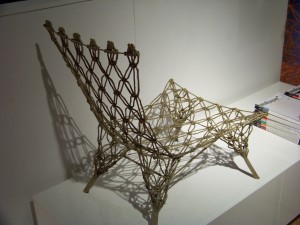
Thank you, Bekah Jorgensen, for your article last week! Inspired by your intro, here’s a little background to my writings for The Weekly.
I write so often about the seasons of life, the hope and enthusiasm tucked away or blatantly obvious. I hope to reestablish that I am not optimistic all the time, and I definitely do not seek that reputation. I wish to give hope to a fractured world through these articles. Darkness in my life exists (and it is the fact that I receive illuminated hope that I am who I am).
As I wrote a few weeks ago, public communication, inherently direct and black and white, is necessary for communal living. I am grateful for the space and grace to write as freely as I do. After watching Inception for the first time this weekend, I’m struck by the idea of “planting an idea into someone’s mind.” Let me know if the words I share in this space are anything but life-giving and challenging. And with that, here are some thoughts for this week!
If you put a
chair
in an empty room,
what changes?
If you put a desk with the chair, what is the implication?
Psych majors, I’m sure you could help me out here.
Physically speaking, the chair implies rest and a sense of order … depending on the chair. If you have a cushy chair, it sings a different song than a stool, right?
The actions associated with the objects in a room affect (to a limited extent) how one reacts to the room. The same is true about any kind of input—aural input such as music and words (kudos to Bekah J., for ponderings on the word “interesting”), visual input (Internet, scenery, colors, faces, windows, lighting, lighting, LIGHTING … hint against all the florescent lighting EVERYWHERE. Gross. There’s gotta be a study on the negative impact of that kind of harsh lighting. Anyone?)
On the side of physical space, Wray Hebert, a writer for the Scientific American, wrote “Arranging for Serenity: How Physical Space and Emotion Intersect” just three years ago. I figured a tangible study would help ground my thoughts here. Herbert uses a psychological study to express how the art of feng shui possibly affects emotional serenity. This study pits two groups of people: one group who sees a piece of paper with two coordinates close to each other and the other group who sees a piece of paper with two points with a greater distance between them.
The first group succumbed more easily and intensely to emotionally distressing media. Comparatively, the second group was less affected by the negative input. In Hebert’s words, the people who had a less “pinched perception of the universe” were better prepared to face everyday challenges. These folks were “primed for greater psychological distance” in the simple act of viewing an image of generous space between two components. Perhaps this is a healthy attenuation and moderation of empathy.
This official study grants civilized and educated credibility to a theory upheld by various walks of life. Myself for instance— I am not a psych major, but since I could waddle, I intensely sensed the necessity and vitality of this refreshing sense of serenity in physical space. Ever since I could waddle, I’ve been moving around furniture. My family loves to tell the tale of me attempting to adjust our grandfather clock in all its nine-foot mahogany glory, to the point that the little frog stuffed animal on top fell off. My dad caught me in the act, and for at least 15 years, I’ve been lovingly reminded of that moment by my family.
As a little squirt, I thoroughly relished the catharsis of turning my room upside down, cleaning every nook and cranny and living and sleeping in the mess until the next day, I had enough energy to see it adjust into a masterpiece. The memories and toys I was blessed enough to receive and play with, the crafts and plants that lived in their designated corners, all these characters in my life had a place, and it needed to be reviewed and redefined every so often.
Despite this, I didn’t think I was creative growing up. My brother drew marvelously, sharing his gift with friends and family via pen and inked notes and pictures. My sister crafted all through the ‘90s with puffy paint and chunky jewelry and eventually majored in fashion design. Brother and sister are grown-ups now in a big city, and here I am, atop little St. Peter, still moving around furniture by myself and discovering facets of myself that I didn’t know existed.
Funny how hindsight makes us see the world and ourselves so much more clearly.